















VISIT US AT WTC EXPO 2025 - HALL A4, STAND NR. 4D30




















VISIT US AT WTC EXPO 2025 - HALL A4, STAND NR. 4D30



Hello and welcome from me, Simon, as I guest-edit while Lily-Fleur is studying for her master’s in contemporary and creative writing.
And what a time to be going to print. The industry at a pivotal point around the big environmental issues and not much firm geopolitical ground to stand on as regards climate and the environment either. I suspect there will be many wide-ranging views and would love to hear what readers think.
The global aviation industry aims to achieve net zero by 2050 as research shows there is considerable ground to cover. It was the inimitable Andy Warhol who said, “They always say time changes things, but you actually have to change them yourself” and our lead feature shows the extent of the decision-making needed to ensure change happens.
This, of course, is at another level to our passenger onboard amenity market, where a growing commitment to mitigate climate change can be commended. You’ll see pockets of sustainability and innovation in almost all our articles, from sustainable materials to a reusable shopping bag keepsake and, in an example of ‘art imitating life’, one of the most favourable outcomes has been the drive to sustainable design.
We’ve been so delighted to uncover stories of the emerging creativity behind many amenity products that we’ve dedicated this edition to art and design. It’s our great privilege to bring
these stories to you through this latest edition of Amenities Magazine.
As with all these existential global challenges, eventually we must find a balance. Many of the current endeavours seem to be a proactive contribution towards avoiding a catastrophic future while also enabling both suppliers and buyers to have a positive impact. But does this come at a price?
I’d be interested to know the thoughts of the amenities industry and you, our readers, as to whether sustainable design has compromised the quality and feel of onboard amenities provided to guests.
The simple truth is that we cannot innovate our way out of the climate crisis, and we can’t plant our way out, either.
Without governments, major industries, and multinational companies prioritising people and the planet before profit, sustainable design simply delays the inevitable.
Looking forward, we have the 2025 TravelPlus Awards ceremony taking place on the evening of Tuesday 8th April at the Altes Mädchen in Hamburg. It’s the 16th year of this prestigious event and we’re very grateful to all who have submitted entries. Look out for the awards shortlist, coming soon!
Simon Ward

IS BROUGHT to you by...











1.2 million liters of water saved in production
7.5 million plastic bottles recycled assembled with love by 70% reduction in energy emissions

Most of us will have snapped a photograph of the clouds through the plane window during a journey, perhaps looking back at it later to remind yourself how dramatic or peaceful it was. 8
While the amenities market is playing its own, admittedly small, part in sustainability, the airline industry has some considerable ground to cover to reach Net Zero as recent research by the University of Cambridge shows.
JAL expand their striking line of designs with a new First Class amenity kit that challenges the image of ‘disability’. 22
Passengers on board KLM World Business Class will enjoy a fresh touch of luxury and a nod to nature with a newly designed comfort bag thanks to a partnership between the airline and Innovative Beauty Group (IBG).
Specialist design-to-delivery aviation textiles business, TDHIL INDIA, have hit cloud nine with their beautiful and luxurious embroidery-style wool-blend blanket. 35 8
The artist is Yukihito Okabe – Hoo!Hey!
Yukihito Okabe creates artworks by applying crayons to fill the spaces with colors and then using a needle to scrape over the surface, collecting the resulting shavings. Courtesy of HERALBONY a creative company crafting a new culture and challenging preconceptions of disability through art.
www.heralbony.jp





For 45+ years, our team of experts has specialized in creating customized amenity kits, bedding, and other onboard projects that elevate the passenger experience.

Visit us at WTCE in Hamburg at stand 1C10 Hall A, April 8-10 2025
www.wessco.netinfo@wessco.net

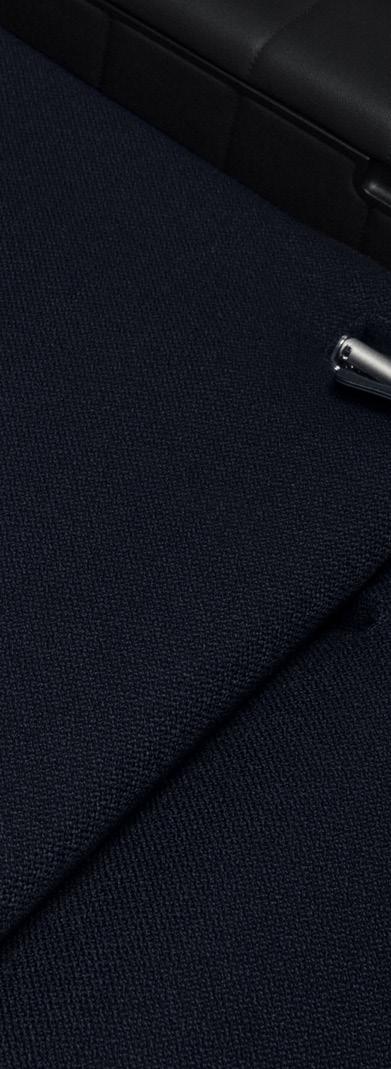
Most of us will have snapped a photograph of the clouds through the plane window during a journey, perhaps looking back at it later to remind yourself how dramatic or peaceful it was.
Well, this simple and satisfying act led to Japanese artist, Sho Shibuya, creating skyscape-inspired luxury loungewear sets which will be available exclusively for the launch of Lufthansa Allegris First Class. Shibuya was enjoying a long flight when he took a photo of the clouds, seeing a colour gradient between white, azure and dark blue. “The symmetry of the gradient from top to bottom makes it unique and reflects the experience of flying,” he says. “The white in the middle represents the clouds, while the deep blue at the top represents the sky and the ocean at the bottom.”
“The Tekla team did an excellent job of realizing my artwork – and when I imagine people wearing it above the clouds, I can’t help but smile.”
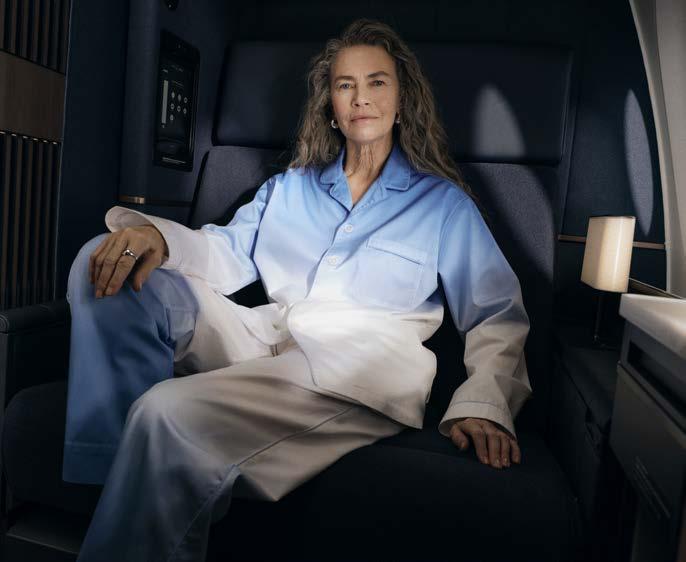
The colour gradient is now captured beautifully on the luxury loungewear sets available exclusively for the launch of Lufthansa Allegris First Class. The sets –which are strictly limited edition and can’t be bought elsewhere - will be available for passengers on selected Munich to JFK flights. Passengers can further elevate their experience by enjoying the privacy of new suites, setting a new standard in luxury travel.
New York-based Shibuya is renowned for art that explores gradients and the colours of the sky. His work gained popularity in the pandemic when each morning he would paint the sunrise on
the front page of the New York Times as a way of contrasting the bleakness of current affairs with the tranquillity of the morning sky.
“Watching the sunrise through my small window became my only source of hope at the time,” he says. “I wanted to capture and record these moments to depict the contrast between the chaos in the news and the beauty of nature.”
Painting the sunrise became an integral part of his life. “Even more than a ritual, more on the level of sleeping and eating,” says Shibuya. “The sunrise stands for the beginning. It reminds us that our surroundings are transient and unique.
Even if I paint the sunrise every day, the same image will never be created twice.”
The luxury loungewear sets are a departure from Shibuya’s usual paper or canvas, and Lufthansa worked with Danish homeware brand, Tekla, to ensure the beauty of his art was captured on the fabric of the unique sleep sets.
“Transferring colour to fabric is completely different from painting on a canvas,” says Shibuya. “The Tekla team did an excellent job of realizing my artwork – and when I imagine people wearing it above the clouds, I can’t help but smile.”



While the amenities market is playing its own, admittedly small, part in sustainability, the airline industry has some considerable ground to cover to reach Net Zero as recent research by the University of Cambridge shows.
According to the University of Cambridge, we have just five years to chart a new future for aviation, a challenge that is outlined in their ‘2030 Sustainable Aviation Goals’ report of September 2024.
If it feels like this is just around the corner, we should be concerned at their assertion that the industry is ‘dangerously off track’ in meeting Net Zero emissions by 2050 and that current efforts to do so could, in fact, land the sector in a worse position than simply doing nothing.
They propose that the next five years are therefore a pivotal timeframe to rechart the journey for an industry expected to double in size, at least, by the target date. And what they’re asking for will be no mean feat.
Immediate action for a sustainable future
The University’s report outlines four goals which require clear and robust commitment from decision makers on market, policy and technology advancement. As a result, they will not be easy to achieve.
Goal 1 – ‘Operation Blue Skies’ focuses on avoiding contrails by creating and utilising labs which can test within a realistic airspace environment;
Goal 2 – ‘Systems Efficiency’ requires leading governments to set out clear commitments to the market regarding systems-wide efficiency improvements aimed at eventually unlocking a new wave of policies;
Goal 3 – ‘Truly Sustainable and Scalable Fuel’ recognises that current alternative fuel suggestions and processes do not go far enough and asks for global policy development to achieve a scalable solution encompassing fuel types and production techniques;
Goal 4 – ‘Moonshots’ suggests launching several high-reward experimental demonstration programmes to identify the most viable transformative technologies by 2030.
There’s a mix here of clear, swift and determined policy action, a proactive and collaborative mindset from governments and industry players, and an immediate and concerted effort to push the boundaries of technology.
All four goals are well and truly on the radar of the people who can impact progress, though, as they were conceived at the inaugural Transatlantic Sustainable Aviation Partnership meeting in which governments of the UK, US and EU participated. They have also been previewed at COP28.

One of the big issues facing anything related to climate change is the difficulty in settling on known facts. Future outcomes, by their nature, require a lot of forecasting and, as just one example, the uncertainty in the rate at which contrails warmed Earth in 2018 is set at +/- 70%.
The report therefore makes it very clear that the ability to better demonstrate likely outcomes is critical to getting buy-in from decision-makers as early as possible. This is where the labs that are the focus of the first goal come into play.
Their full name, Airspace-Scale Living Labs gives a little more insight into what is intended: a realistic space with the capacity and technology to test, learn and pivot.
They will be looking at contrails, which are believed to be altitude-dependent, and have a similar impact on climate warming as emissions. The labs will provide a variety of climate conditions, congestion scenarios and regulatory landscapes to test the current theory around what is termed ‘persistent contrails’.
The Moonshots referred to in the fourth goal are designed to focus on Sustainable Aviation Fuels (SAF). This has been the primary pathway for decarbonising aviation but the resulting substantial drain on global resources plus the complexity of production both present significant challenges and risks.
Transformative technologies would reduce our dependence on biofuels and dramatically lower the energy demands of production. But investment in these technologies is needed now if the aviation industry is to reap the required benefits in time for 2050.
The call for Moonshots is another vote for demonstrable evidence because the three proposed programmes involved would give real insight into the viability of the transformative technologies in question by 2030. They would involve carrying out initial concept and technology development, feasibility studies, and demonstration programmes for the resulting fuel production plants.
There would then be sufficient time to scale the chosen solution before the 2050 deadline.
To provide additional reasoning ability, a policy dashboard has also been developed. It proved highly effective at the Transatlantic Sustainable Aviation Workshop because it enabled a collaborative team of UK, US and EU policymakers to explore the complexities of the Net Zero debate and identify the most impactful leverage points within the system.
As a result, many future scenarios could be identified to help understand possible consequences of decisions, choices and actions. Here’s an overview of three that were covered in the report:
Scenario 1 assumes we continue on the current trajectory but achieve targets for sustainable alternative fuels (SAF) without the four goals being implemented.
By using the cheapest form of SAF and allowing aviation to consume more than the desired proportion of it, there is a cross-sector environmental impact and a rise in global emissions. In addition, aircraft production has increased slightly faster than forecast and contrail avoidance has been delayed due to scientific uncertainty. Net Zero aviation is not achieved by 2050.

Scenario 2 models the outcome if Moonshots – high reward demonstration programmes – are activated successfully and the four goals are implemented. The resulting Hydrogen Technology Demonstrator showed biomass could be eliminated as a fuel choice in the long term. Importantly, though, additional policies were needed,including increasing aircraft production rates to halve the average fleet age. However, as a result, hydrogen aviationis rapidly scaled. and Net Zero aviation is achieved by 2050.
Scenario 3 is centred around a scale-up of responsibly sourced SAF against the backdrop that Moonshots are unsuccessful. The four goals are implemented and as a result, Operation Blue Skies results in a global contrail avoidance scheme from 2030. Net Zero is achieved by 2050.
None of these scenarios is straightforward and every decision or choice results in other factors needing consideration, sometimes outside of the control of the aviation sector. There is no smooth path to achieving Net Zero.
However, we know this from previous major technological transitions, and we therefore also know that delaying action does not result in a clearer way forward. In fact, the findings of the University of Cambridge’s report demonstrate how flawed that approach really is. Bold intervention and allowing competing solutions to vie for dominance until one prevails, will drive an outcome.
The report acknowledges that this is an ambitious plan which needs to start immediately. To achieve the proposed goals, we will need to significantly challenge our thinking and existing logic, including the assumption that there can be multiple technologies coexisting beyond 2050.
It argues that the perception of a smooth transition is flawed as is the opinion that ‘doing nothing’ will result in only a minor increase in emissions.
It also concludes that, if we miss this window, we face a future of escalating climate impacts from a rapidly growing aviation sector.
It’s time for the aviation industry to act. But who will come to the table?
Aviation Impact Accelerator, 2024. Five Years to Chart a New Future for Aviation: The 2030 Sustainable Aviation Goals
[R.J. Miller, E.N. Whittington, S. Gabra, P.J. Hodgson, J. Green, J. Kho, J.R. Smith, D. Singh]. AIA, University of Cambridge.
To read the full report, go to [www.cam.ac.uk/stories/flight-path-to-net-zero] www.cam.ac.uk/stories/flight-path-to-net-zero

F or a personal tour of new innovations in sustainable products, headsets, amenities, textiles and brand partnerships.
WTCE Booth 4E30 SEE WONDERS




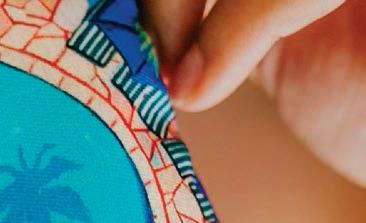










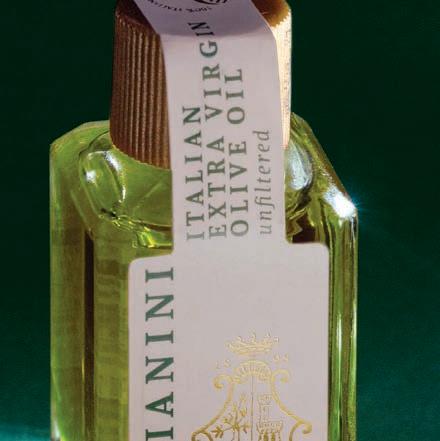
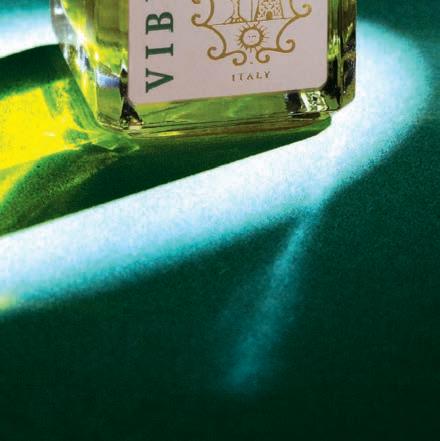





JAL expand their striking line of designs with a new First Class amenity kit that challenges the image of ‘disability’.

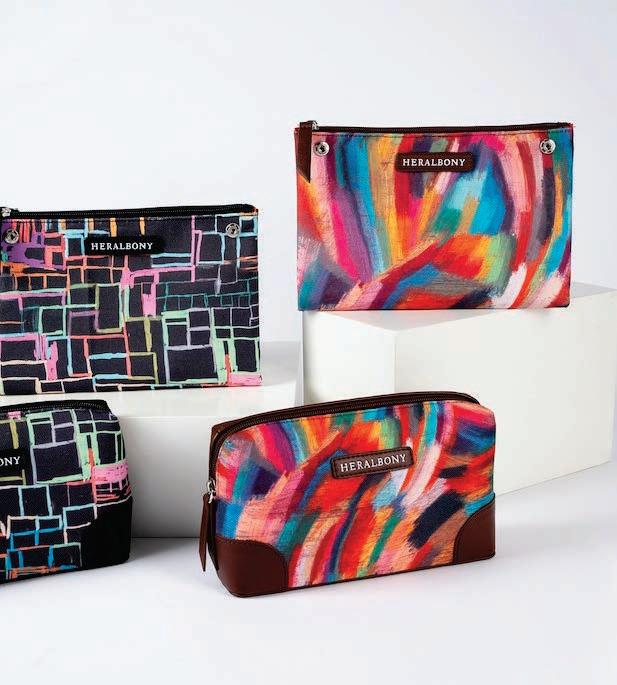
It’s rare to find beautiful items where the backstory is as engaging and appealing as the item itself. But that is what happened when Japan Airlines (JAL) unveiled their collaboration with HERALBONY, facilitated by FORMIA.
HERALBONY is a brand founded by twin brothers Takaya and Fumito Matsuda, who work with artists with cognitive difficulties. The bright, eye-catching designs from six artists were initially featured on JAL’s Business Class kits but are now being rolled out onto First Class kits with brand new designs from two new artists.
Yukihito Okabe, one of the artists featured on the new kits, creates unique artwork featuring vibrant colours and flashes of moulded crayon shavings, whereas Yu Takada likes to draw designs inspired by mazes, creating a winding labyrinth of multi-layered art. There is a story of what drives and inspires the artist behind each design.
It’s been so well received that the line is also being expanded across multiple customer touch points, appearing on coffee cups in the First-Class lounge and printed sleeves for inflight meal boxes.
Masaharu Iwamoto, Vice President of the Product and Services Development Department in the Customer Experience Division at Japan Airlines, said, “We are excited to introduce these new, distinctive kits for our First-Class guests. Through this expanded collaboration, we aim to spotlight the talents and stories of a wider range of artists to the world!”
It is a particularly poignant collaboration for HERALBONY. Takaya and Fumito’s older brother was born with cognitive disabilities and autism, and they grew up observing people feel sorry for him.
“He laughs like us, hurts like us, shows anger like us, and cries like us,” the brothers say. “He feels these emotions and goes through his everyday life in peace just like any other ‘normal’ person.
“But we grew up listening to people feel sorry for our brother. Surely one’s personal emotions cannot be better than that of another. We grew up wondering why, until we naturally decided to go into business that involved people with cognitive difficulties.”
Their work has expanded,Covering more than 2000 pieces of artwork from nearly 30 countries. The collaboration with JAL has already proved a popular way of using artists stories to prompt a conversation about inclusivity and aims to encourage people to embrace the uniqueness in others instead of pushing them to adapt. The brothers are passionate about the work produced by these artists and the impact it’s having on reframing disabilities, saying, ‘‘there is a world of splendours that can only be captured through the eyes of our unique, colourful artists.”
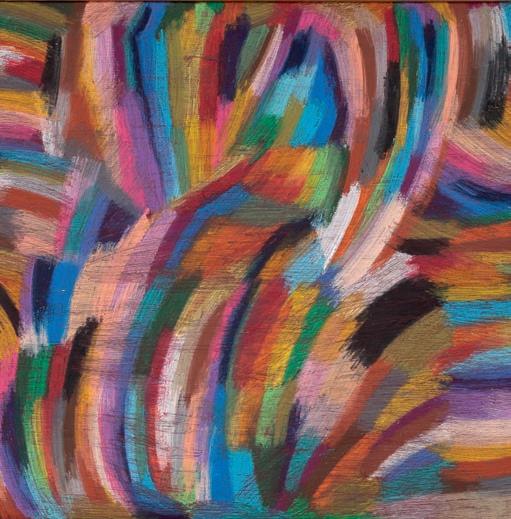

Yu Takada has a rich sensitivity and imagination, possessing a wide range of expressions as a performer in taiko drumming, painting and dancing. He is a true Disney fan and creates works inspired by parades and magic carpets. Other than Disney, he likes to draw mazes as well.
The multi-layered mazes gradually formed by connecting line after line lure people into a labyrinth. He enjoys adorning his favourite books and around his bed, having a leisurely atmosphere surrounding him.
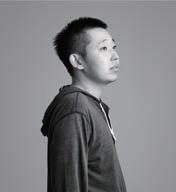
Yukihito Okabe creates artworks by applying crayons to fill the spaces with colors and then using a needle to scrape over the surface, collecting the resulting shavings. He plays with these shavings, moulding them like clay and creating his artwork, which he refers to as “Koroichi”. Interestingly, he does not value the painting itself which attracts people with its vibrant colours and strong touch.



Keisuke Mori began creating his artwork in a studio at the age of 12 and has been painting oils since he was 17. While he works on larger pieces like the F100 size canvas (1620x1303mm ), it takes him 20 minutes to create and 40 minutes to draw a single 200mm line, thus incorporating a tremendous amount of time into his work. He possesses a sincere and friendly behaviour, exchanging pleasant greetings with those around him. In his free time, he enjoys playing video games and exploring thrift shops.


Tomihiro Watanabe from the art studio Safran Life Park, has a deep passion for freedom and travel. He meticulously applies oil pastels, one stroke at a time, using his thumb to blend them. Choosing colors as if guided by an inner instinct, Watanabe occasionally expresses with intensity. Although it might seem like he’s in a mindful state while creating, he paints with a smile. Additionally, his enthusiasm for speedy automobiles is translated into his artwork which exudes a feeling of swiftness. The phrase “Done!” marks the conclusion of his artwork.

Sushi, games, cooking and drawing is what marina loves. She brightens up the place with her cheerful personality like a ray of sunshine as she happily dances to music and reports on the daily school lunch menu. She started creating artwork at the age of 12, and among various artistic activities, her favourite is to fill the notebook with “word-ish” characters and symbols. It is an ancient inscription, a futuristic language of the cosmos, or simply whimsical creations without any specific meaning? The enigmatic typography, flowing as if in a rush, tempts people to unravel its secrets, but only the artist truly knows the answer.


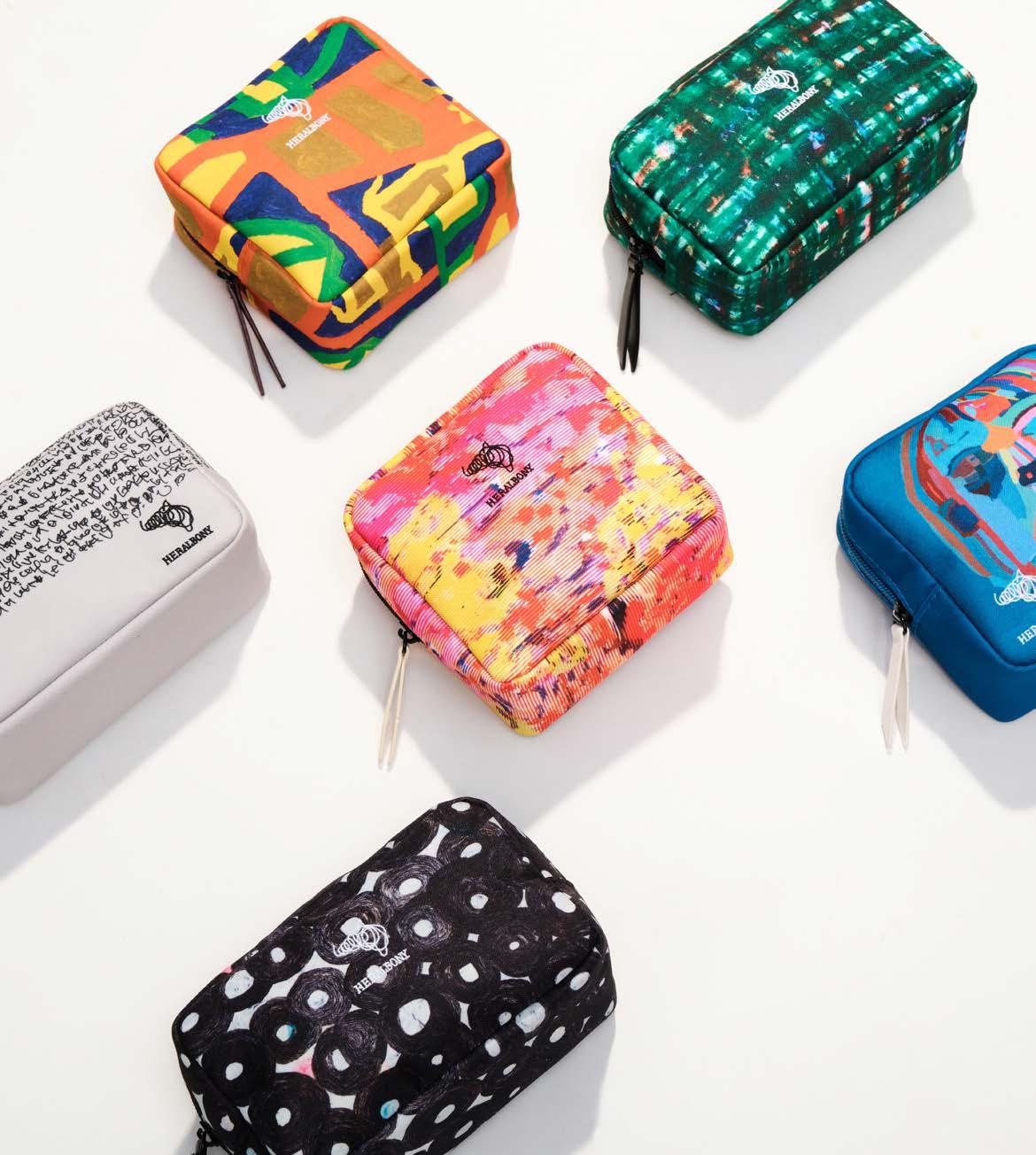

Nobody knows the true story of what triggered him, but around the age of 15, GAMON started painting out of the blue, eagerly studying a collection of Rene Magritte’s works that he found on the shelves of an art studio. With astonishing concentration, he meticulously drew each line and shape, filling the canvas with geometric forms and distinctive color sensibilities. He is completely immersed during the whole process, oblivious to the surrounding of noise and distractions. His enigmatic artworks possess an ethnic quality while also being somewhat modern, capturing the attention of people in all ages and walks of life.


Since starting creative activities in the 90’s Sanae Sasaki has been continuously exploring various forms of expression, including not only painting but also weaving, paper cutting, embroidery, and more. Although the content of her creations change over time, each work remains intricate and rich in color and composition. In recent years, her creative process has undergone frequent transformations, experimenting with techniques such as coloring concentric circles of paper cutouts in multiple colors and arranging them on walls, or drawing multiple circles on drawing paper and filling them with red marker. Her art is constantly evolving and full of transformations.


Atsuhito Fujiki engages in the process of creating his artworks while enjoying conversations with staff members. He verbally communicates his preferences for cars, food and people and then translates them into drawings of “maru” (circles). For him, the exchange of words serves as a means of connecting with others, and his creative activities are an extension of that interaction. Each vividly layered circle in his artworks represents the traces of conversations and exchanges with staff members, embedding a sense of compassionate feelings that have been nurtured.


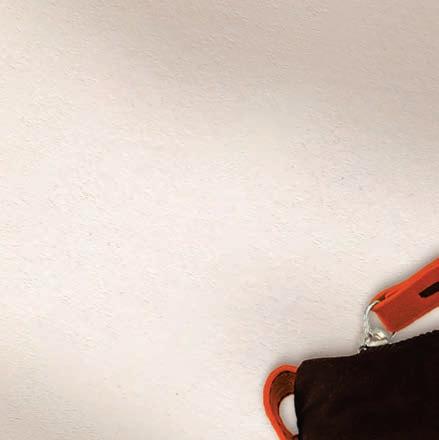

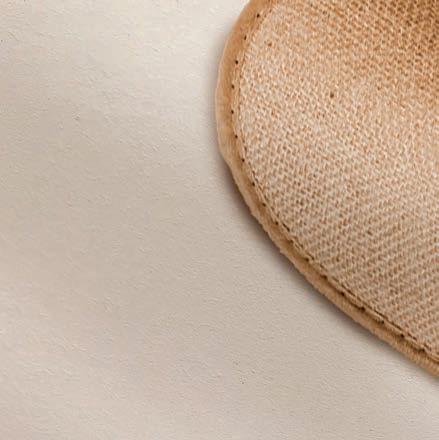
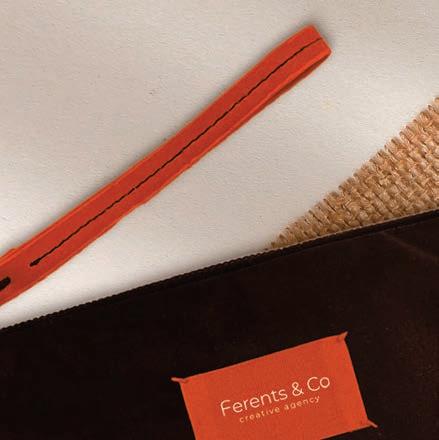


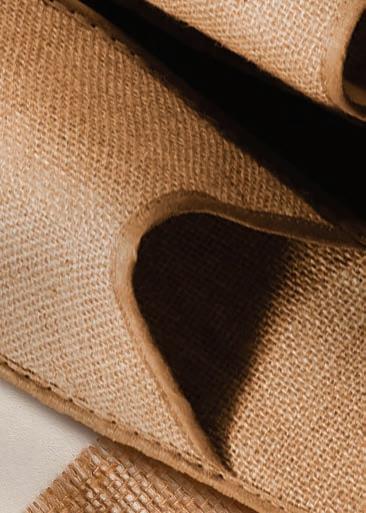
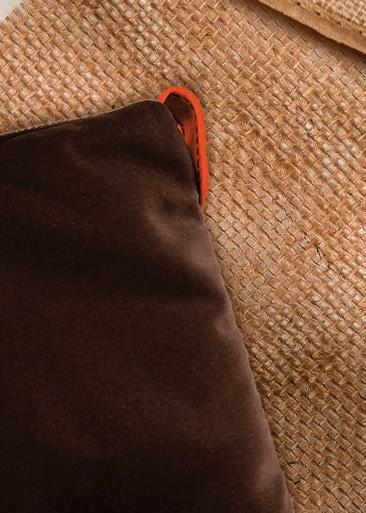
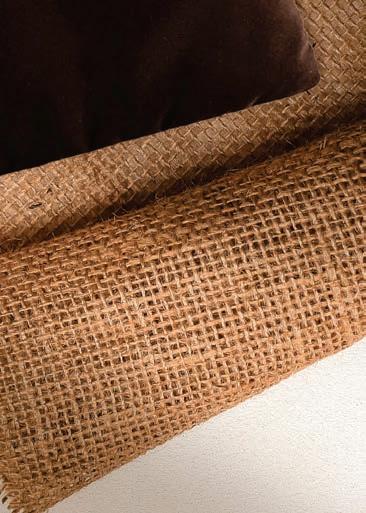

Passengers on board KLM World Business Class will enjoy a fresh touch of luxury and a nod to nature with a newly designed comfort bag thanks to a partnership between the airline and Innovative Beauty Group (IBG).
The carefully curated bags are available in four different coloured patterns, each inspired by changing weather during the flight at different times of the day. The purpose was to capture what passengers might see from their window: sunrise and sunset, rain, fog, and wind, and immerse passengers in the luxury experience of travel.
The first release of bags – available to World Business Class passengers travelling on intercontinental flights – beautifully shows off the colours of the rising and setting sun over the Dutch landscape in the summer season. Every six months, KLM will unveil a new design in two colours, one for the night and one for the day.
“We are thrilled to partner with KLM Royal Dutch Airlines to introduce this exceptional new amenity kit which combines practicality with luxurious indulgence.”



The design is a collaboration between IBG’s French and Dutch teams alongside Dutch design agency, Envisions, who are a premium care and home brand with a strong social purpose.
With a continued focus on sustainability, the bags are unsurprisingly designed to be kept and reused. It’s an approach that many airlines have taken, but few have shown such a commitment to showcasing sustainable materials with a beautiful aesthetic. Each collectable bag focuses on a fabric developed by Envisions and is woven from recycled yarn and can be unfolded into a reusable shopping bag, so passengers have a desirable and useful keepsake long after their journey has finished.
This ties in nicely to KLM’s desire to make every journey meaningful. They want to make travel mean more than just reaching a destination by creating memorable encounters and inspiring personal experiences with their careful attention to detail.
The new kits replace KLM’s previous collaboration with Dutch beauty brand, Rituals. Now, World Business Class passengers will be enjoying luxurious pamper items such as face cream and lip balm from Marie-Stella-Maris, a sustainable bamboo toothbrush and toothpaste tablets from sustainable oral care brand, Smyle, as well as the comfortable essentials of an eye mask for a peaceful journey and cosy socks for maximum comfort.
KLM collaborate with emerging creative talent and focus on sustainable and reuseable solutions. Gwenaelle Ogor, General Manager of IBG France, said “We are thrilled to partner with KLM Royal Dutch Airlines to introduce this exceptional new amenity kit which combines practicality with luxurious indulgence.”
The impressive story behind Envisions growth starts with a collective of 30 young graduates from the Design Academy Eindhoven who have grown into an agency with expertise across all aspects of design. They focus on material research and the whole process that leads to an end project, with the mission to ‘reimagine materials, its application and its potential’.

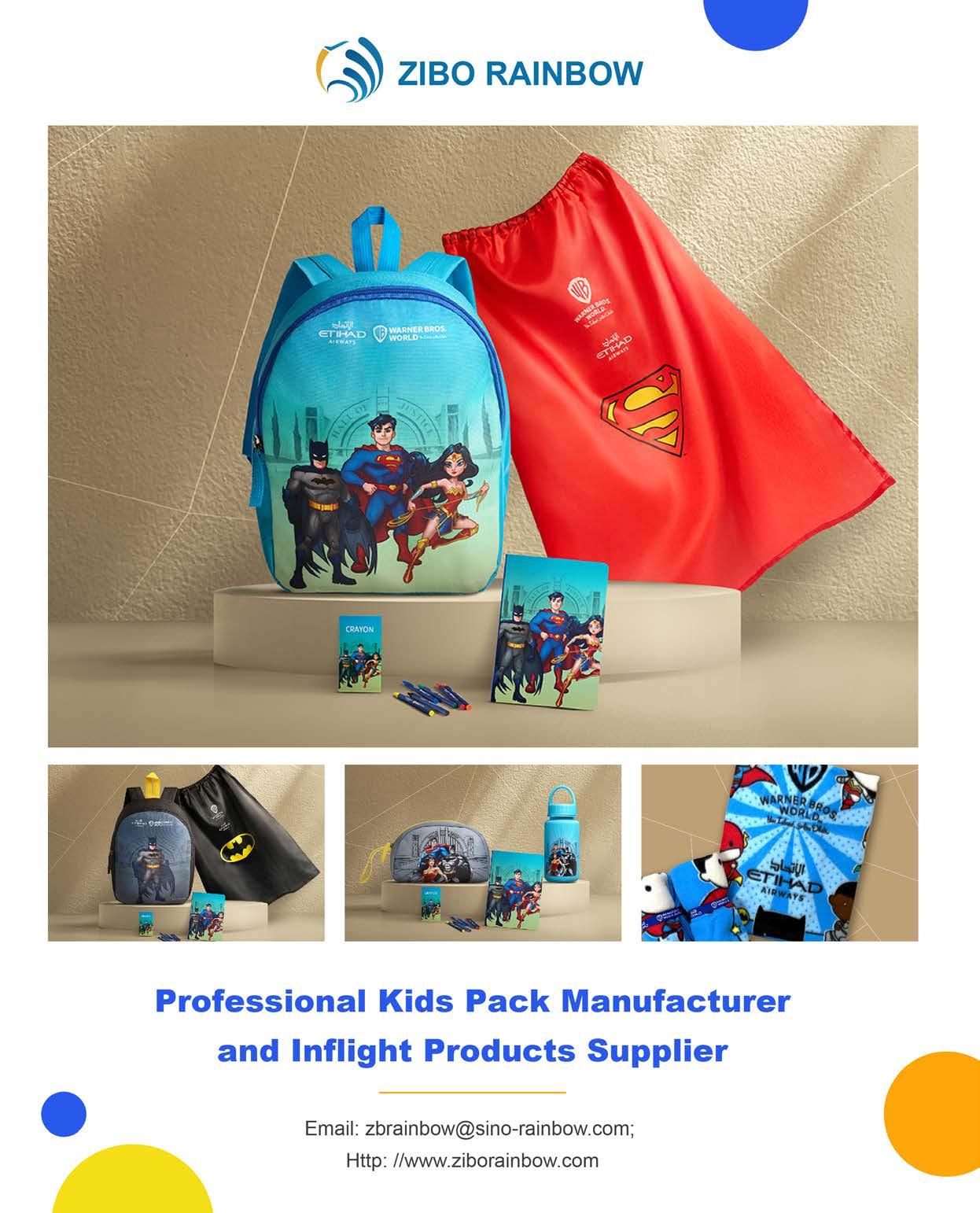
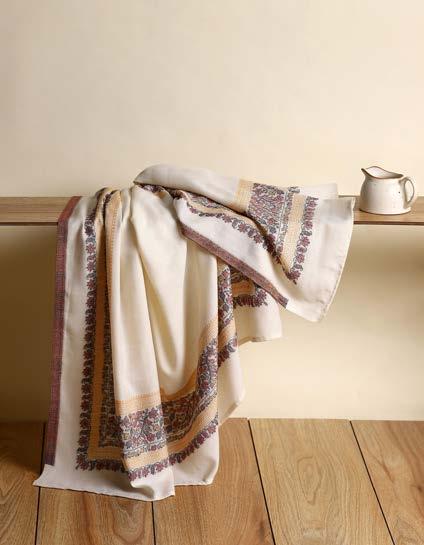
TDHIL India blanket is the height of
Specialist design-to-delivery aviation textiles business, TDHIL INDIA, have hit cloud nine with their beautiful and luxurious embroidery-style wool-blend blanket.
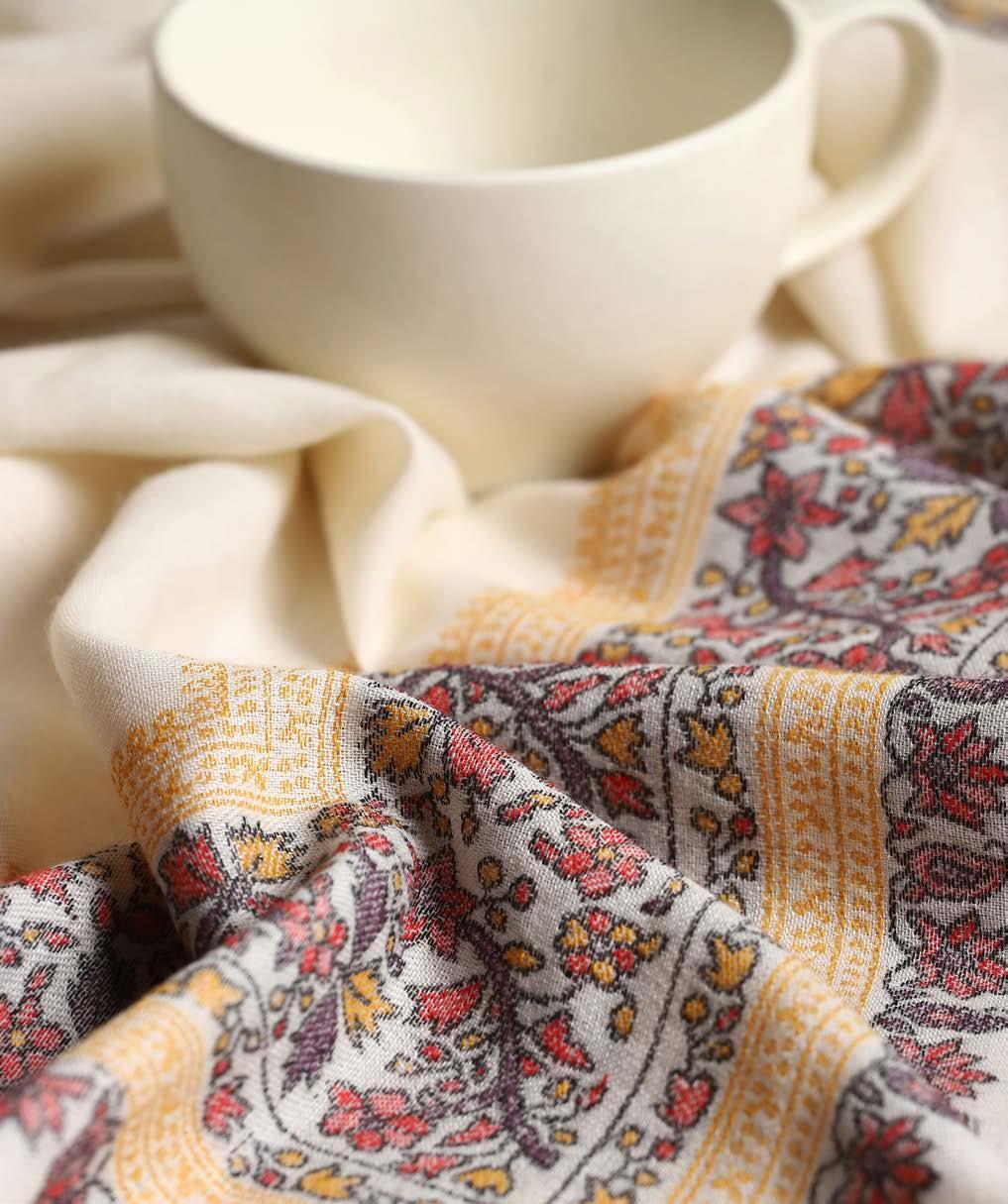
As India’s largest manufacturing company, and with a decade of experience in the aviation textiles market, this one-stop-shop for best-in-class products has really hit the high notes, achieving a coveted Gold in the Business Class Bedding Set category at the 2024 Travel Plus Awards. The company is collaborating with major airlines globally and is experiencing rapid growth.
Inspired by India’s rich heritage, the blanket’s unparalleled design showcases the constant innovation and newness of TDHIL’s products and is a great example of the quality of design skills that exist within this fully certified supplier of choice.
Blankets are essential to passenger comfort and this premium version, for Air India’s First Class and Business Class fliers encapsulates the airline’s ethos as the ‘Maharaja of the Skies’, beautifully capturing its four brand aspects of progressiveness, warmth, vibrance, and boldness.
Fittingly, Air India’s beloved Maharaja mascot appears, but most notable is the delicate woven border. Its jacquard and motif echo the style of traditional Sozni embroidery from Jammu and Kashmir, often used to adorn pashmina shawls.
Unusually, the blankets are a poly viscose wool blend, providing extra warmth and setting Air India apart from its competition when it comes to passenger comfort and are available in both regular and fully sustainable versions using responsibly sourced viscose and recycled wool yarn.
TDHIL INDIA supply a variety of textilebased cabin appearance products for airlines and hotels and, following the success of their Air India blanket, are now increasing supply of their best-in-class products with global appeal to other airlines.
As far as the Air India premium blanket is concerned, they have more than met their brief. In fact, the luxurious accessories were so popular with passengers, they now come adorned with a label asking people to leave them on the aircraft after use!
‘Maja of e
Tuesday 8th April 2025 - Hamburg
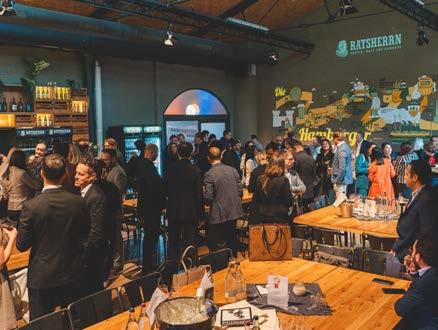

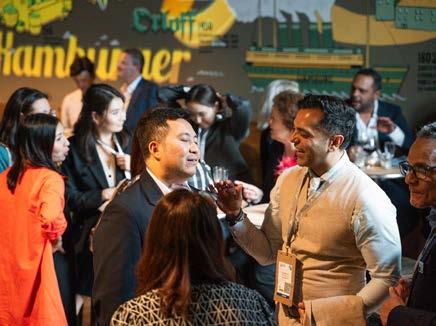































The TravelPlus Awards ceremony is possibly the best networking opportunity in the industry
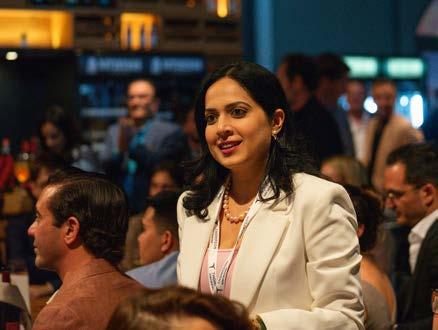
We are delighted to return this year to the Altes Mädchen, Ratsherrn, Braugasthaus for the TravelPlus Awards. The venue is in the trendy Sternschanze neighbourhood, a 10-minute walk from the WTCE Expo.
The reception begins at 5.30 pm, and the awards ceremony starts at 7.00 pm. Drinks and canapés served.
This is a strictly ticket event; for more information and to discover this year’s shortlist, go to www.travelplusawards.com











